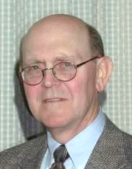
 Railroad
Celebration
Railroad
Celebrationby Kenneth A. Dupuy
Finally, commemoration of Abbeville's railroad connection with the rest of the world took place on December 15, 1892. And what a momentous occasion it was! A committee composed of Drs. W. D. White and W. G. Kibbe, and Mr. J. Henry Putnam arranged for the front of the depot to be decorated, and, I think, quite uniquely. The decorations consisted of cane, cotton and rice "in their natural state," as well as "festoons of Spanish Moss." Inside the depot there was an exhibit of the products of the parish.
This celebration was such a momentous occasion that the stores and offices closed at 2:30 p.m.—stores generally closed at 7 p.m. Many citizens went to the depot to await the special train that was due to arrive at 3 p.m. Picture the scene. First of all, much of the land south of the depot was undeveloped. There were no rice mills. The Abbeville Rice Mill Co. wasn't built until 1900. Two years later, the Planters' Rice Mill was built. Looking to the west, there was no railroad bridge—Abbeville was the end of the line until 1902. The railroad wharf and the elevator to unload the steamboats were under construction.
To the east there was no road on the south side of the tracks from the depot to State Street. Gus Godchaux promised to build this road, in September 1893, if someone would build a sidewalk. On the north side of the tracks, the Masonic cemetery stood silently and somberly, while across Main Street from the cemetery a two-story "club house," in the process of being constructed, promised gaiety and distractions.
Let's return to the celebration. Horses, buggies, wagons and other horse-drawn vehicles are tied to posts, hitching posts, trees, etc. Some of the crowd are sitting in these vehicles, while others are standing around in the dirt and the dust. Occasionally, some of the gentlemen glance at their pocket watches, some of these men affecting a grand importance to this act. They look around, especially eastward, waiting to hear or to see the train that will be the switch that starts the celebration. Some of the boys chase one another through the crowd, stirring up dust and ire. A few adolescents are painfully aware of the opposite gender, but because of customs they are unable to go over and talk to one another.
The wait for the train is unexpectedly long as the train doesn't arrive until 4:45 p.m. This delay causes the few butterflies in some of the speakers' stomachs to multiply into swarms and to cause even more anxiety. At last the whistle sounds and causes all heads to turn eastward. The distractible find other things to consider, perhaps the temperature, the others in the throng, tasks or chores that must be done once this hoopla is all over, etc.
The train finally comes in, hissing steam and screeching as the brakes are applied. For some in the crowd, this noise is too loud and unexpected, and they are slightly overwhelmed. It takes a few minutes for them to regain their composure. There is the train! It is made up of "two sleepers..." and a coach, and naturally the awe-inspiring locomotive. Once the train has come to a noisy stop, the reception committee boards it and escorts the dignitaries to the depot's platform. Included in the group of VIPs are Julius Kruttschnitt, the president of the Iberia & Vermilion R.R. (I&V R.R.), and general manager of the Southern Pacific R.R., and Mayor Koch of New Iberia. Mr. Kruttschnitt is introduced to Mr. J. Henry Putnam, chairman of the "Citizens Railroad Committee."
Naturally several speeches are delivered, including an "elaborate" one by Mr. Putnam. The final speaker has difficulty keeping the crowd's attention, because by now some pistols are being fired into the air and whistles are being blown, all in jubilation on this exceptional occasion.
Following the speeches, the officials and the press are shown the exhibits and are then transported by slow-moving, horse-drawn vehicles to the Masonic Lodge on State Street. This is the building that had served as our courthouse from 1885 to 1891. In the lower hall a banquet is served. Several toasts are made by Judges Allen and Debaillon, and by Messrs. Putnam, W. A. White, Mayor Koch and others. I wonder about the sobriety of some of these gentlemen after so many toasts.
Meanwhile, back at the depot, some of the boys and men have lingered on, so that they can admire and inspect the powerful locomotive more thoroughly. The females who have accompanied these males must bide their time until the males have satisfied their curiosity about the train.
by Ken Dupuy
[Read also the reports from the Abbeville Meridional about the long struggle to bring the railroad to Abbeville, and Ken Dupuy's imaginary ride on the train from Abbeville to New Iberia.]